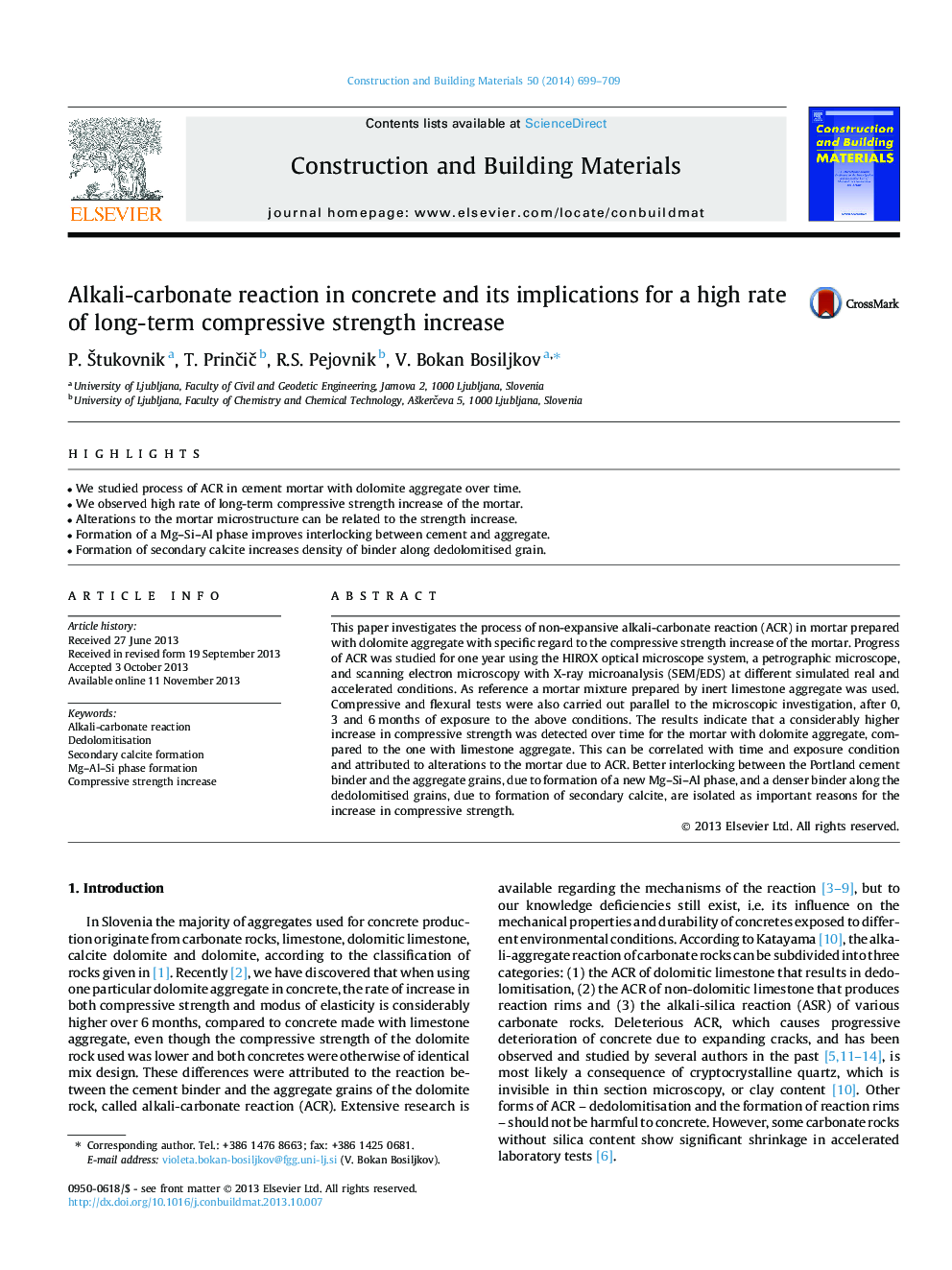| کد مقاله | کد نشریه | سال انتشار | مقاله انگلیسی | نسخه تمام متن |
|---|---|---|---|---|
| 257933 | 503602 | 2014 | 11 صفحه PDF | دانلود رایگان |
• We studied process of ACR in cement mortar with dolomite aggregate over time.
• We observed high rate of long-term compressive strength increase of the mortar.
• Alterations to the mortar microstructure can be related to the strength increase.
• Formation of a Mg–Si–Al phase improves interlocking between cement and aggregate.
• Formation of secondary calcite increases density of binder along dedolomitised grain.
This paper investigates the process of non-expansive alkali-carbonate reaction (ACR) in mortar prepared with dolomite aggregate with specific regard to the compressive strength increase of the mortar. Progress of ACR was studied for one year using the HIROX optical microscope system, a petrographic microscope, and scanning electron microscopy with X-ray microanalysis (SEM/EDS) at different simulated real and accelerated conditions. As reference a mortar mixture prepared by inert limestone aggregate was used. Compressive and flexural tests were also carried out parallel to the microscopic investigation, after 0, 3 and 6 months of exposure to the above conditions. The results indicate that a considerably higher increase in compressive strength was detected over time for the mortar with dolomite aggregate, compared to the one with limestone aggregate. This can be correlated with time and exposure condition and attributed to alterations to the mortar due to ACR. Better interlocking between the Portland cement binder and the aggregate grains, due to formation of a new Mg–Si–Al phase, and a denser binder along the dedolomitised grains, due to formation of secondary calcite, are isolated as important reasons for the increase in compressive strength.
Journal: Construction and Building Materials - Volume 50, 15 January 2014, Pages 699–709
